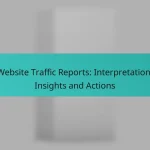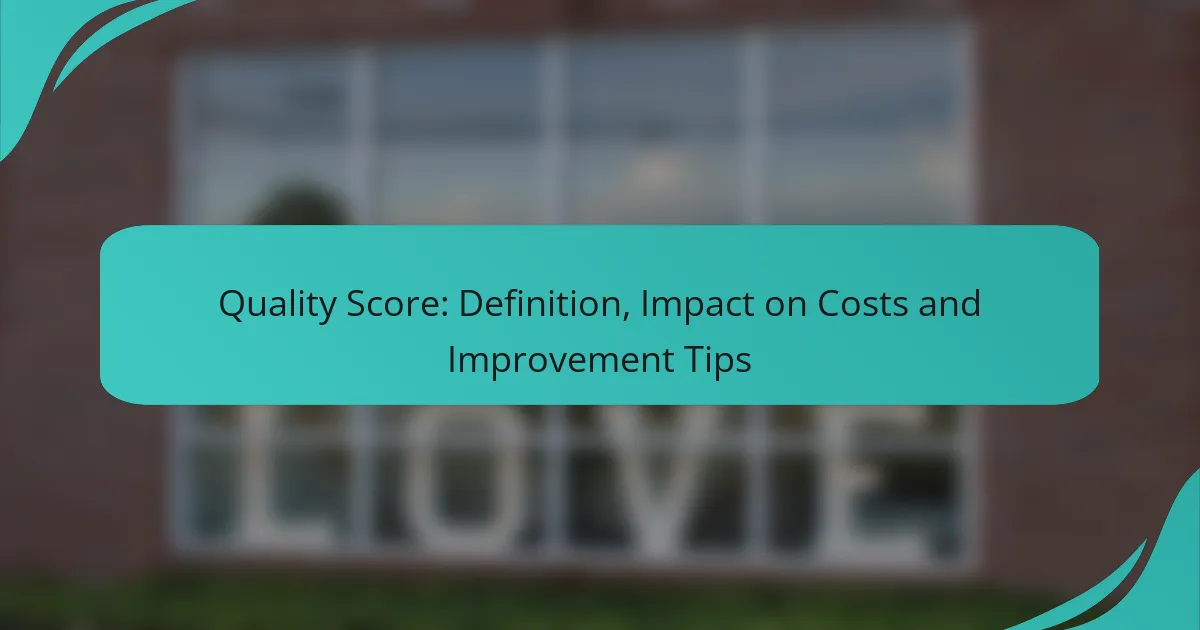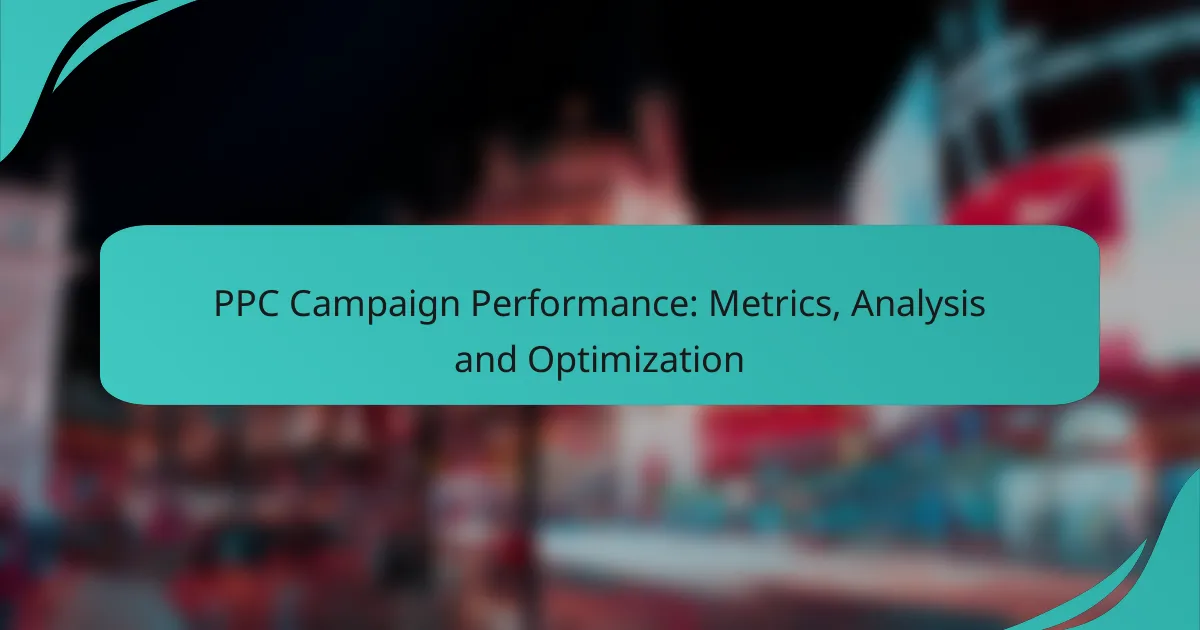PPC advertising requires careful budgeting to ensure that financial limits are set while maximizing return on investment (ROI). By implementing effective cost control strategies, businesses can optimize ad spend and enhance campaign performance, ultimately leading to more efficient use of their advertising budget. Measuring ROI is crucial, as it allows advertisers to evaluate revenue against costs and make informed decisions for future campaigns.
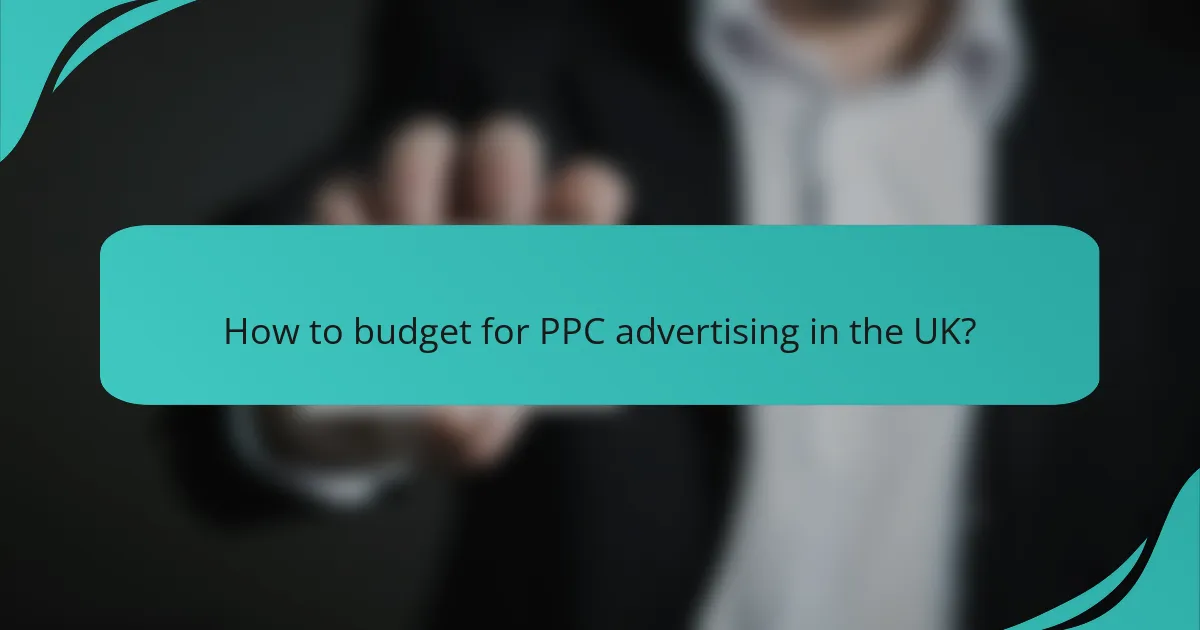
How to budget for PPC advertising in the UK?
Budgeting for PPC advertising in the UK involves setting clear financial limits while ensuring effective ad spend. A well-structured budget helps maximize ROI by aligning costs with advertising goals and channel performance.
Define clear advertising goals
Establishing clear advertising goals is essential for effective PPC budgeting. Goals may include increasing website traffic, generating leads, or boosting sales. Each goal should have measurable outcomes to evaluate success.
For example, if the goal is to increase sales, define a target percentage increase and the corresponding budget needed to achieve that growth. This clarity helps in allocating resources effectively.
Analyze historical campaign data
Reviewing historical campaign data provides insights into what has worked in the past. Analyze metrics such as click-through rates, conversion rates, and cost per acquisition to identify successful strategies. This data can guide future budget allocations.
For instance, if a specific keyword consistently yields high conversions, consider increasing its budget. Conversely, reduce spending on underperforming keywords to optimize overall campaign efficiency.
Allocate budget based on channel performance
Distributing your budget according to channel performance ensures funds are directed where they yield the best results. Monitor the effectiveness of different platforms, such as Google Ads or social media, to determine where to invest more.
A practical approach is to allocate a larger portion of the budget to high-performing channels while maintaining a smaller budget for experimental campaigns. This strategy allows for flexibility and adaptation to changing performance metrics.
Consider seasonal trends
Seasonal trends can significantly impact PPC performance, making it crucial to adjust budgets accordingly. Identify peak seasons for your industry and allocate additional funds during these times to capitalize on increased consumer interest.
For example, if your business sees a surge in sales during the holiday season, plan to increase your PPC budget in advance. This proactive approach can enhance visibility and drive higher conversions during critical periods.
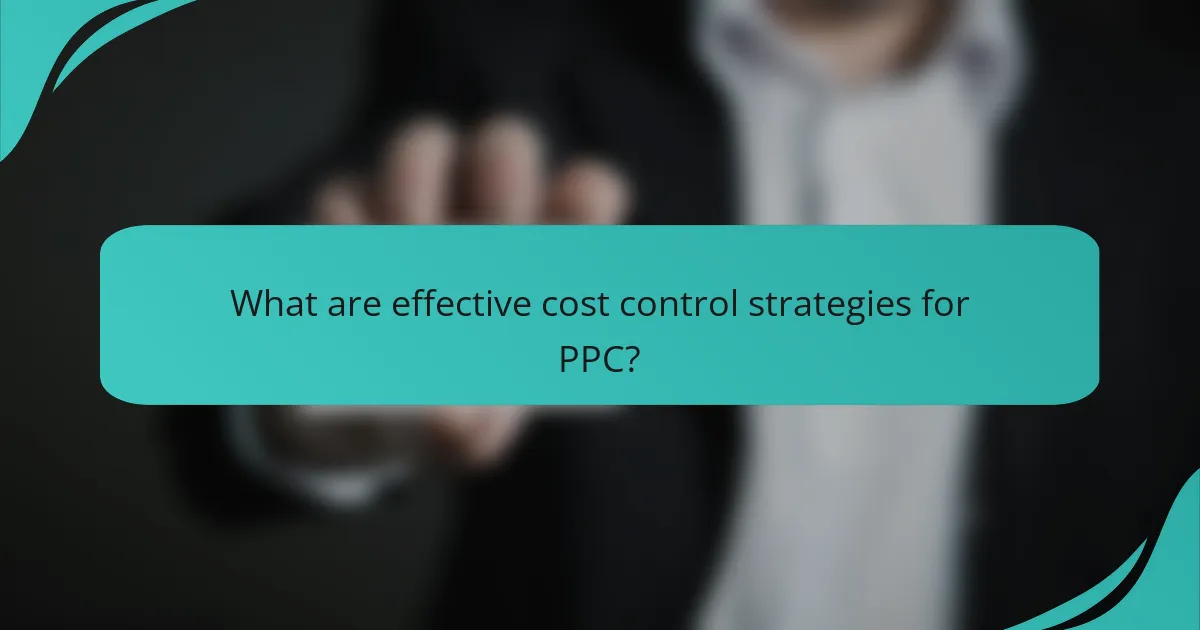
What are effective cost control strategies for PPC?
Effective cost control strategies for PPC focus on optimizing ad spend while maximizing return on investment (ROI). Implementing these strategies can help ensure that your advertising budget is used efficiently, leading to better performance and lower costs.
Utilize automated bidding strategies
Automated bidding strategies allow you to set your PPC campaigns to adjust bids based on performance metrics. These strategies can optimize bids in real-time, helping to maximize conversions while controlling costs. For example, using Target CPA (Cost Per Acquisition) can help you achieve a specific cost per conversion, making it easier to manage your budget.
Consider testing different automated bidding options to find the one that aligns best with your goals. While these strategies can save time, monitor performance closely to ensure they are delivering the desired results.
Implement negative keywords
Negative keywords prevent your ads from showing up for irrelevant search queries, helping to control costs by avoiding clicks that are unlikely to convert. By regularly updating your negative keyword list, you can refine your targeting and improve the efficiency of your ad spend. For instance, if you sell premium products, adding terms like “cheap” or “discount” as negative keywords can filter out unwanted traffic.
Regularly reviewing search term reports can help identify new negative keywords to add, ensuring your ads reach the right audience. This practice can significantly enhance the ROI of your PPC campaigns.
Regularly review ad performance
Consistent review of ad performance is crucial for effective cost control in PPC. Analyzing key metrics such as click-through rates (CTR), conversion rates, and cost per click (CPC) can provide insights into which ads are performing well and which need adjustments. Set a schedule to review performance weekly or bi-weekly to stay on top of trends.
Use A/B testing to compare different ad variations and identify what resonates best with your audience. This approach not only helps in optimizing current campaigns but also informs future strategies, ultimately leading to better cost management and improved ROI.
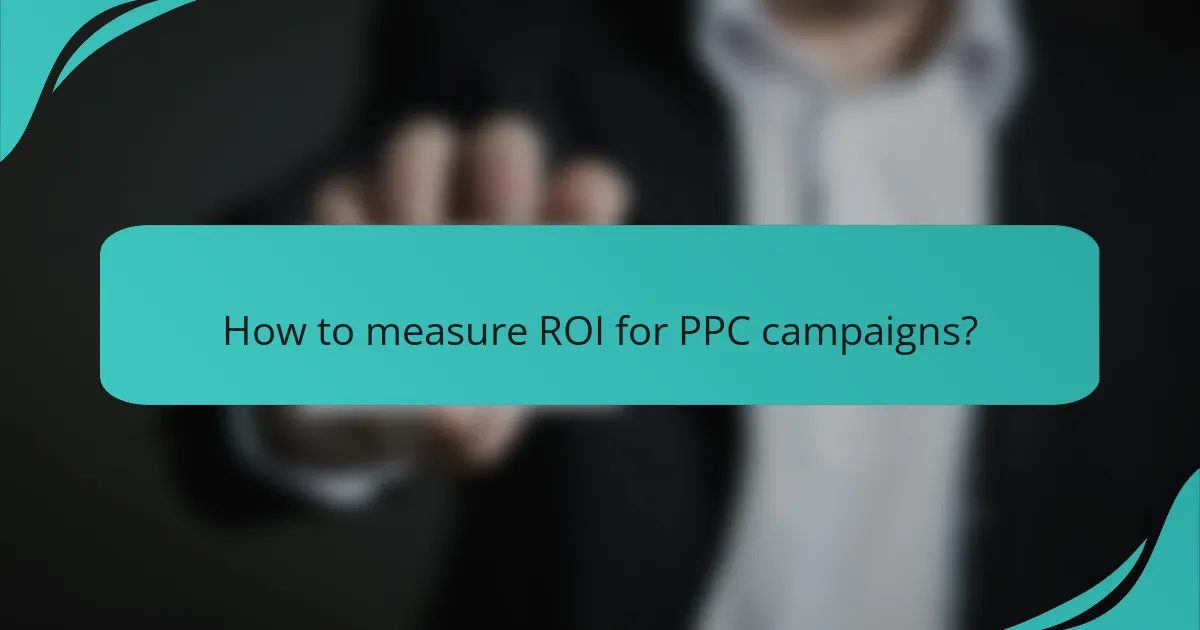
How to measure ROI for PPC campaigns?
Measuring ROI for PPC campaigns involves evaluating the revenue generated against the costs incurred. This assessment helps determine the effectiveness of your advertising spend and guides future budget allocations.
Calculate conversion value
To calculate conversion value, identify the total revenue generated from conversions attributed to your PPC campaigns. This can include sales, leads, or other valuable actions. For instance, if your campaign generated $5,000 in sales from a $1,000 ad spend, your conversion value is 5:1.
Consider using tools like Google Analytics to track conversion values accurately. Set up goals that reflect the monetary value of conversions to streamline this process.
Track customer lifetime value
Customer lifetime value (CLV) measures the total revenue a customer is expected to generate throughout their relationship with your business. Understanding CLV helps assess the long-term impact of your PPC campaigns, as acquiring high-value customers can justify higher upfront costs.
To calculate CLV, multiply the average purchase value by the number of purchases per year and the average customer lifespan in years. For example, if a customer spends $100 annually for five years, their CLV is $500.
Use attribution models
Attribution models help assign credit for conversions to different touchpoints in the customer journey. This is crucial for understanding which PPC ads are most effective in driving sales. Common models include first-click, last-click, and linear attribution.
Choosing the right model depends on your business goals. For example, last-click attribution gives full credit to the final ad clicked before conversion, while linear attribution distributes credit evenly across all interactions. Experiment with different models to see which provides the most accurate insights for your campaigns.
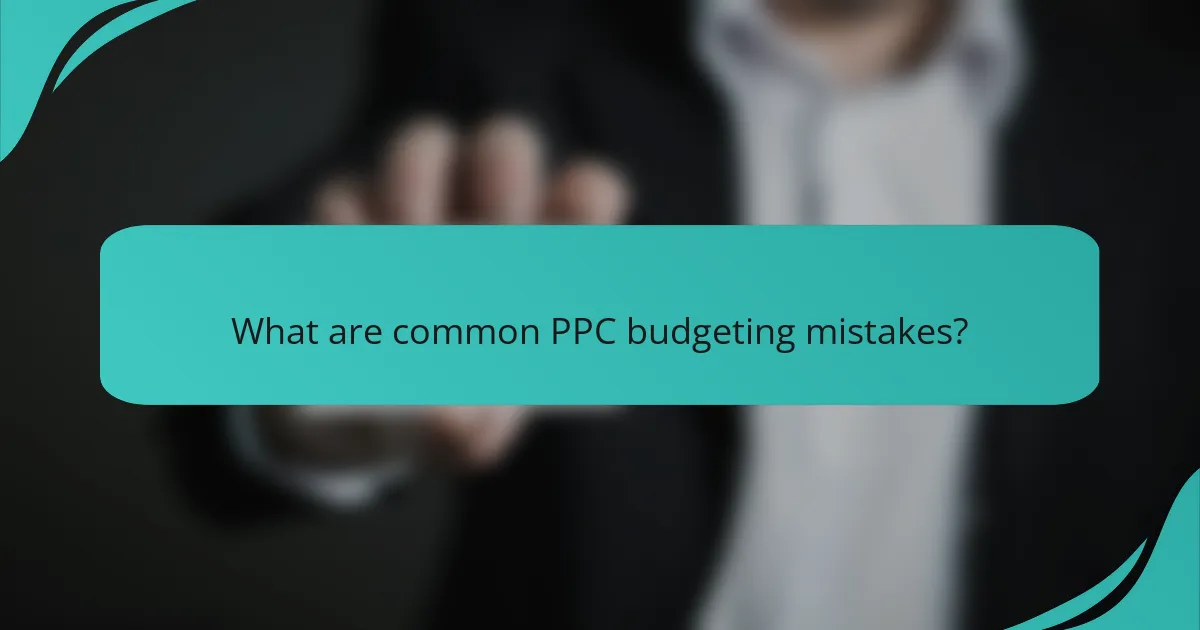
What are common PPC budgeting mistakes?
Common PPC budgeting mistakes include underestimating competition costs and neglecting to adjust for performance. These errors can lead to overspending and reduced return on investment (ROI), making it crucial to understand and avoid them.
Underestimating competition costs
Underestimating competition costs can significantly impact your PPC budget. Many advertisers fail to account for the bids of competitors, which can drive up the cost per click (CPC) beyond initial estimates. It’s essential to research your industry and analyze competitor bidding strategies to set a realistic budget.
To gauge competition costs, consider using tools like Google Ads Keyword Planner or SEMrush. These tools provide insights into average CPCs and competition levels for specific keywords, helping you allocate your budget more effectively. Aim to set aside a flexible budget that can adapt to competitive fluctuations.
Neglecting to adjust for performance
Neglecting to adjust for performance can lead to wasted ad spend and missed opportunities. Regularly reviewing your PPC campaigns allows you to identify underperforming ads and keywords, enabling you to reallocate your budget to more effective areas. This ongoing optimization is key to maximizing ROI.
Establish a routine for performance analysis, such as weekly or bi-weekly reviews. Focus on metrics like click-through rates (CTR), conversion rates, and cost per acquisition (CPA). Adjust bids or pause poorly performing ads to ensure your budget is directed towards the most profitable strategies.
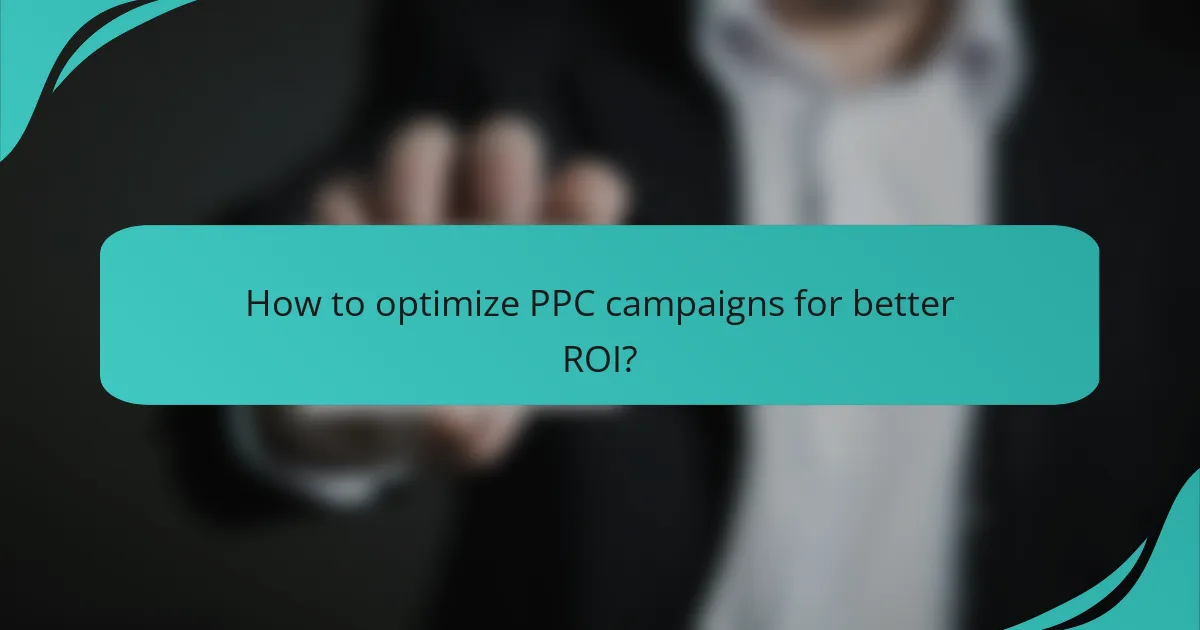
How to optimize PPC campaigns for better ROI?
To optimize PPC campaigns for better ROI, focus on testing ad variations, refining audience targeting, and implementing remarketing strategies. These approaches help improve ad performance, reduce costs, and ultimately increase returns on your advertising investment.
Test ad copy variations
Testing different ad copy variations is crucial for identifying which messages resonate best with your audience. Create multiple versions of your ads, altering headlines, descriptions, and calls to action. Monitor performance metrics to determine which variations yield the highest click-through and conversion rates.
Consider using A/B testing to compare two versions of an ad directly. This method allows you to make data-driven decisions based on real user interactions, helping you refine your messaging effectively.
Refine target audience settings
Refining your target audience settings ensures that your ads reach the most relevant users. Use demographic data, interests, and behaviors to create specific audience segments. This targeted approach can lead to higher engagement rates and lower costs per acquisition.
Utilize tools like Google Ads’ audience insights to analyze performance across different segments. Adjust your targeting based on which groups deliver the best ROI, and consider excluding underperforming segments to optimize your budget.
Utilize remarketing strategies
Remarketing strategies allow you to re-engage users who have previously interacted with your website or ads. By targeting these warm leads, you can increase the likelihood of conversions at a lower cost compared to reaching new audiences. Set up remarketing lists based on user behavior, such as page visits or cart abandonment.
Implement dynamic remarketing to show tailored ads featuring products or services users viewed. This personalized approach can significantly enhance your campaign’s effectiveness and improve overall ROI.

What tools can assist with PPC budgeting?
Several tools can effectively assist with PPC budgeting by providing insights into costs, performance, and optimization opportunities. Utilizing these tools can help advertisers manage their budgets more efficiently and maximize return on investment (ROI).
Keyword Research Tools
Keyword research tools like Google Keyword Planner and SEMrush help identify relevant keywords and their associated costs. These tools provide estimates on search volume and competition, allowing advertisers to allocate their budgets toward the most effective keywords.
When using keyword research tools, consider focusing on long-tail keywords, which often have lower costs per click (CPC) and can drive more targeted traffic. Regularly updating your keyword list based on performance data is crucial for maintaining an effective PPC strategy.
Budget Management Software
Budget management software such as AdEspresso and WordStream can streamline the budgeting process by tracking expenses and performance metrics in real-time. These platforms allow you to set daily or monthly budgets and receive alerts when nearing limits.
Implementing budget management software can help prevent overspending and ensure that your PPC campaigns remain profitable. Look for features that offer automated reporting and insights to make informed adjustments to your campaigns.
Analytics Tools
Analytics tools like Google Analytics and Adobe Analytics provide valuable insights into user behavior and campaign performance. By linking these tools to your PPC accounts, you can track conversions and understand which ads are driving the most value.
Utilizing analytics tools is essential for measuring ROI and making data-driven decisions. Regularly review your analytics reports to identify trends and areas for improvement, ensuring your PPC budget is allocated effectively.
Bid Management Tools
Bid management tools such as Marin Software and Kenshoo help automate the bidding process for PPC campaigns. These tools analyze performance data to adjust bids in real-time, optimizing for cost efficiency and maximizing ad visibility.
When selecting a bid management tool, consider your specific needs, such as the ability to manage multiple accounts or integrate with other marketing platforms. Properly configured bid management can significantly enhance your PPC budgeting strategy.



